The internet is full of websites and platforms that allow digital media making easier and that requires little technical knowledge. Canva provides templates for posters and social media posts. Google Slides offers pre-made themes for slideshows that doesn’t require any decisions on font, color, and placement. These platforms invite students to follow simple directions and receive admiration on the creativity of someone else. Although students are starting to create their own media now, the ghosts of the shortcut websites are still there. Students are identifying their hesitancy and trial-and-error as a failure, rather than an inevitable and important part of the digital making process. Troubleshooting has helped students see their projects as works in progress and has allowed them to see the expertise in themselves and their classmates. We have to help students see that they are capable of producing digital media and they don’t have to limit their creativity with the platforms that are out there.
Head to my twitter @mrpopel for the full thread! https://twitter.com/mrpopel/status/1045437774655102978




I hope you enjoy!
Michael Popel

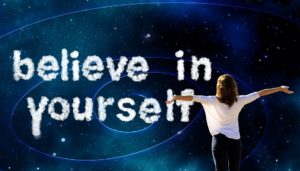
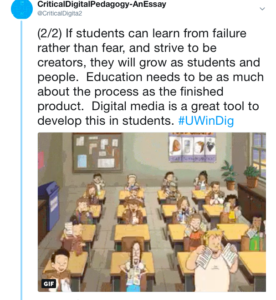
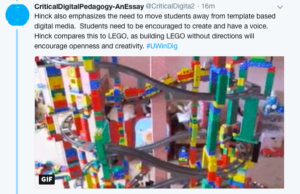

 This expands upon the way that students use technology; they stick to what they know, limit themselves creatively with the shortcut/template options and hope and pray they followed the right steps to avoid failure. Yes, it is possible to have some imagination when it comes to these predetermined templates, but students still have to ensure that their creativity fits. It is unfortunate that these applications and technologies are programmed this way because it limits innovation, creativity and openness for students. Hinck concludes with ways in which we as educators can make the transition from the step-by-step linear instruction to a more open-ended, discovery-based way to implement technology in the classroom, and ultimately learning in general. If we give students the opportunity to try, fail, revise and succeed, students will be better equipped to become makers, creators and critical thinkers.
This expands upon the way that students use technology; they stick to what they know, limit themselves creatively with the shortcut/template options and hope and pray they followed the right steps to avoid failure. Yes, it is possible to have some imagination when it comes to these predetermined templates, but students still have to ensure that their creativity fits. It is unfortunate that these applications and technologies are programmed this way because it limits innovation, creativity and openness for students. Hinck concludes with ways in which we as educators can make the transition from the step-by-step linear instruction to a more open-ended, discovery-based way to implement technology in the classroom, and ultimately learning in general. If we give students the opportunity to try, fail, revise and succeed, students will be better equipped to become makers, creators and critical thinkers.
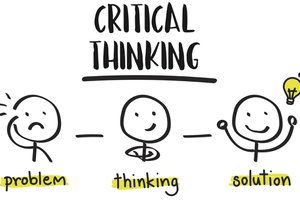
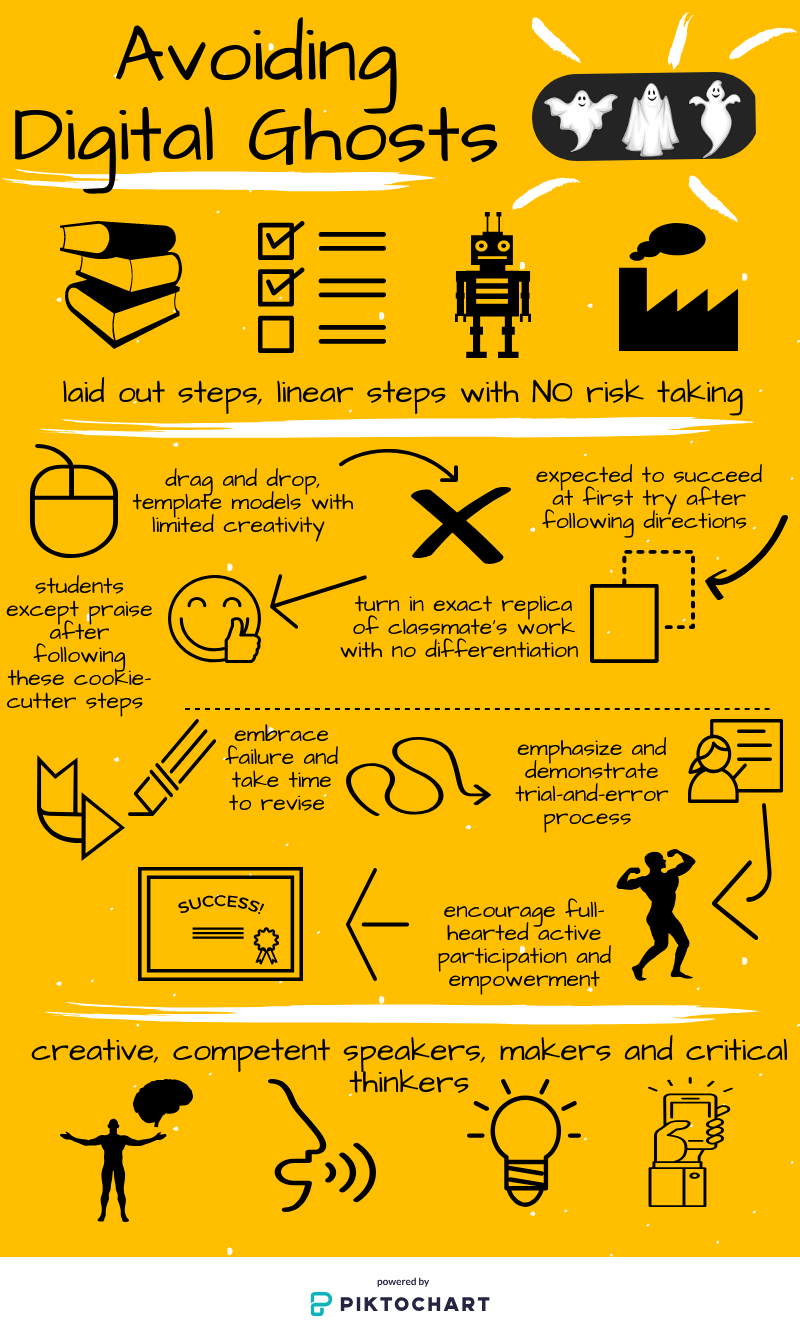
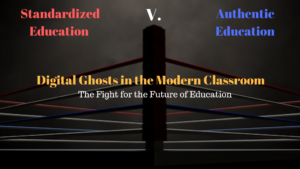


 within the selected template. These learning apps and platforms invite students to follow the directions, get the right answer, turn it in, and get praise. Although many teachers will claim to be moving towards a more authentic way of educating children, either purposely or without knowing these websites and platforms used by teachers reflect the old way of teaching and learning, which views students as containers to be filled with the right answers by teachers. Unfortunately even when these platforms and websites are absent from classrooms they are still affecting student learning, instead we as educators need to help our students move away from users of shortcut/template platforms to makers, creators and critical thinkers.
within the selected template. These learning apps and platforms invite students to follow the directions, get the right answer, turn it in, and get praise. Although many teachers will claim to be moving towards a more authentic way of educating children, either purposely or without knowing these websites and platforms used by teachers reflect the old way of teaching and learning, which views students as containers to be filled with the right answers by teachers. Unfortunately even when these platforms and websites are absent from classrooms they are still affecting student learning, instead we as educators need to help our students move away from users of shortcut/template platforms to makers, creators and critical thinkers.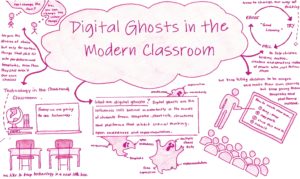 dium for my response because after exploring a few of the other options I was a little intimidated by needing to create something digitally. Additionally, after reading the article which spoke about online platforms limiting creative freedom I felt as though this medium just made sense because it would allow me to get my genuine untouched thoughts across. If I were to use this medium again for a similar purpose I would spend more time brainstorming and planning my Sketchnote before getting started.
dium for my response because after exploring a few of the other options I was a little intimidated by needing to create something digitally. Additionally, after reading the article which spoke about online platforms limiting creative freedom I felt as though this medium just made sense because it would allow me to get my genuine untouched thoughts across. If I were to use this medium again for a similar purpose I would spend more time brainstorming and planning my Sketchnote before getting started.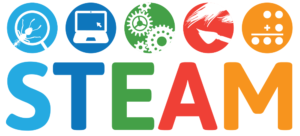 M is about incorporating the arts into math, science and technology but by using these shortcut/template websites and platforms we are limiting the range of creative freedom for students trying to create when using technology. Secondly, I think that we need to give students the tools to critically reflect on these platforms on their own. By teaching our students to think critically and analytically they can start finding these digital ghosts themselves and find alternative ways to create digitally that allow them to use all of their own authentic ideas.
M is about incorporating the arts into math, science and technology but by using these shortcut/template websites and platforms we are limiting the range of creative freedom for students trying to create when using technology. Secondly, I think that we need to give students the tools to critically reflect on these platforms on their own. By teaching our students to think critically and analytically they can start finding these digital ghosts themselves and find alternative ways to create digitally that allow them to use all of their own authentic ideas.